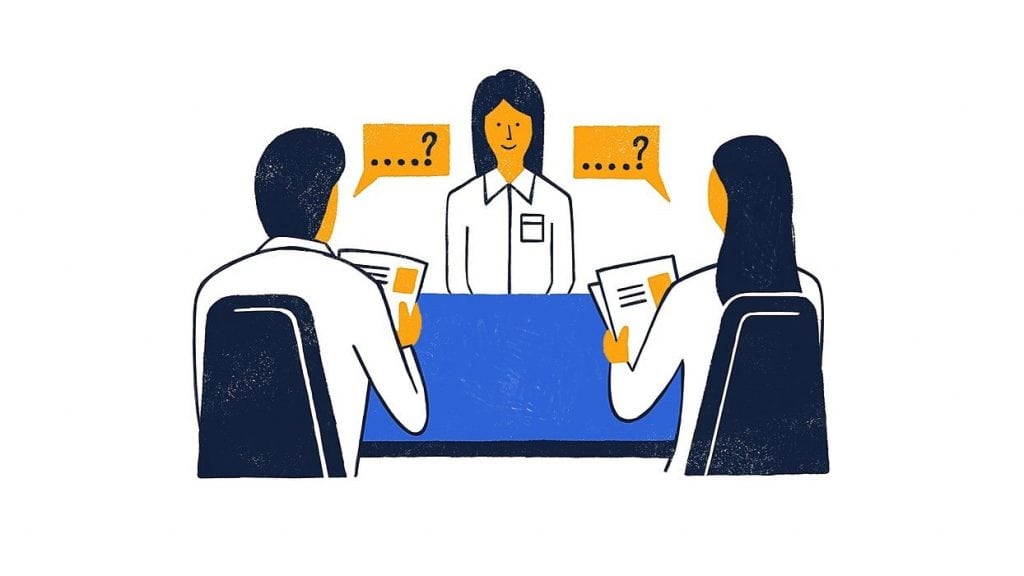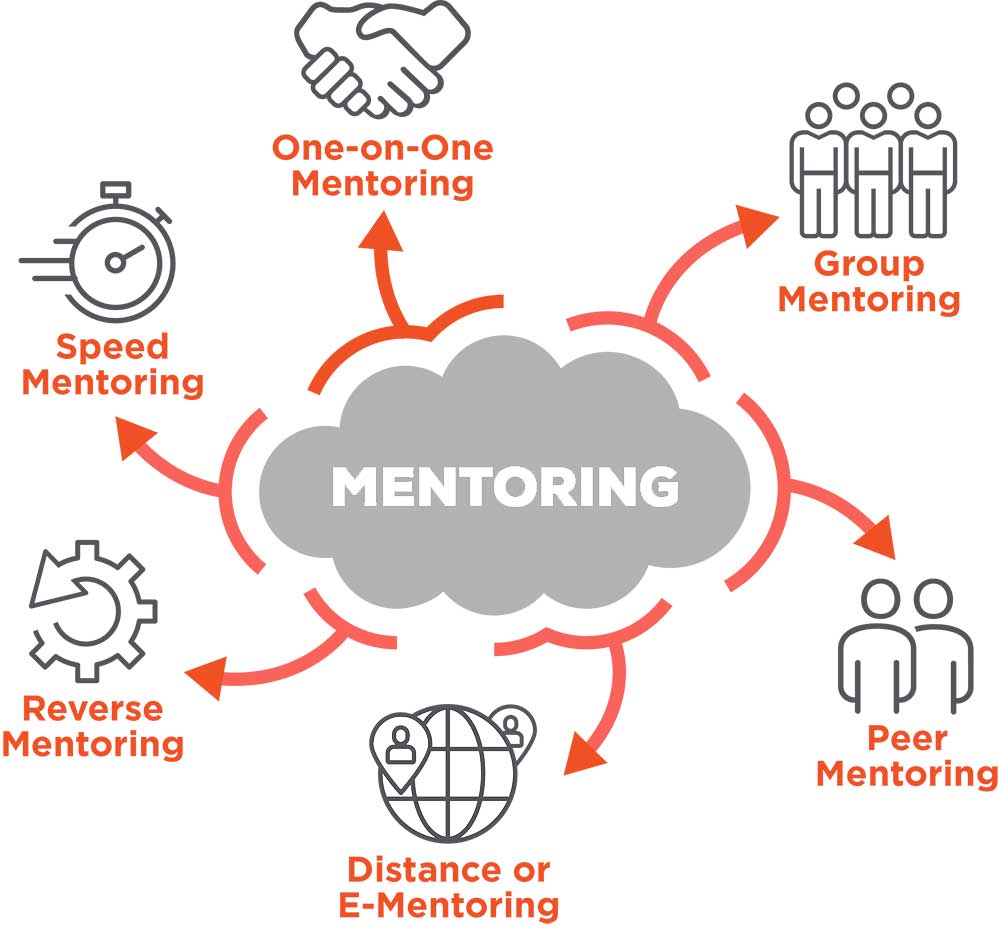How to Get A Job as A Graphic Designer
The demand for creative and skilled graphic designers has never been higher. As visual communicators, graphic designers are responsible for creating captivating designs that convey ideas, information, and emotions through various media platforms. With their unique talent for translating concepts into visual form, they play an essential role in shaping brand identities, advertising campaigns, website designs, and more.
If you have a passion for art, design, and technology and want to break into the ever-evolving field of graphic design, this comprehensive guide is tailor-made for you. We will walk you through the essential steps to land your dream job as a graphic designer, from understanding the role and its requirements to building a standout portfolio and acing the interview process.
In this article, we'll cover the following aspects of getting a job as a graphic designer:
- Understanding the role of a graphic designer: We'll dive into the responsibilities, skills, and attributes you'll need to possess to thrive as a successful graphic designer.
- Education and qualifications: We'll discuss the various educational pathways and certifications available to help you establish a solid foundation in graphic design and enhance your credibility in the job market.
- Building your portfolio: Your portfolio is your ultimate selling point. We'll provide tips on creating a diverse and impactful collection of your best work to showcase your unique style and capabilities to potential employers.
- Networking and building connections: The importance of networking in the creative industry cannot be overstated. We'll share strategies for connecting with other professionals, attending industry events, and utilising social media platforms to build a robust professional network.
- Job search and application: We'll guide you through finding and applying for graphic design positions, including tips on customising your resume and cover letter to make a lasting impression on potential employers.
- Acing the interview process: Finally, we'll help you prepare for the interview process by offering insights into common interview questions, discussing how to present your portfolio, and sharing tips on leaving a lasting impression on the hiring team.
By following the advice and insights in this guide, you'll be well on your way to securing a rewarding career as a graphic designer. So, let's embark on this exciting journey together and explore the steps necessary to land your dream job in graphic design.
Table of Contents
10 Tips to Get a Job as a Graphic Designer

1 – Discover the Hidden Job Market
The hidden job market refers to employment opportunities not publicly advertised or posted by a hiring manager. These jobs may be filled through employee referrals, internal promotions, or direct outreach from job seekers to potential employers.
While traditional job search methods involve searching online job boards, submitting applications, and attending career fairs, the hidden job market offers a less competitive and more personalised approach to job hunting.
Here are some ways to tap into the hidden job market:
- Build and expand your network: The best way to access the hidden job market is by building a robust professional network. Attend industry events, connect with people on LinkedIn, and join professional organisations to meet new contacts.
- Stay in touch with former colleagues: Keeping in touch with previous coworkers can help you learn about new opportunities at their current company or elsewhere. Schedule monthly lunches or coffee dates to stay connected.
- Send your resume to companies directly: Even if there is no current job opening, sending your resume and a thoughtful cover letter to a company can put you on their radar for future openings.
- Reach out to human resources professionals: Building a relationship with HR professionals can help you learn about job openings and get referrals. Attend HR events or reach out to HR professionals on LinkedIn.
By building relationships and expanding your professional network, you can access the hidden job market and increase your chances of finding your next job.
2 – Write an Award-Winning Resume
When creating a resume for a graphic design position, it's essential to showcase both your technical and personal skills. Many tend to focus solely on their technical abilities, but highlighting your interpersonal experience can help set you apart from other applicants.
While technical skills like proficiency in design software and knowledge of design principles are critical, showcasing your ability to collaborate, communicate effectively, and problem-solve with a team is equally important.
For example, consider including specific examples of your interpersonal experience in your resume rather than simply listing your technical skills. This can demonstrate your ability to work well with others, which is often a crucial factor in hiring decisions.
Here are some examples of how you can describe your interpersonal experience:
- I have successfully collaborated with the marketing and communication department to develop original graphics that resulted in a 35% increase in business.
- I worked closely with C-suite executives to rebrand company logos, significantly improving brand recognition and marketability.
- I facilitated team brainstorming sessions to generate fresh and innovative design concepts that met and exceeded client expectations.
You can showcase your ability to work collaboratively and achieve successful outcomes by including these examples in your resume.
Remember, your resume is your professional tool to help you stand out in a competitive job market. Don't just focus on your technical skills; highlight your interpersonal experience to showcase your ability to work effectively with others and achieve outstanding results.
3 – Start Freelancing

For new professionals in the graphic design industry, freelancing can be a great option to gain work experience and build a portfolio of work. One of the significant benefits of freelancing is that it can lead to a full-time position if the company is pleased with your work.
The best way to find freelancing opportunities is to search for them online. Websites such as Upwork, Freelancer, and Fiverr are widespread platforms where companies and individuals post freelance projects. You can also contact companies that interest you by sending them an inquiry and providing a link to your professional design portfolio to showcase your work samples.
If you want to turn a freelance gig into a full-time job, there are a few ways to increase your chances:
- Ask the manager if you can discuss potential employment opportunities if the team is satisfied with your work. This shows that you're interested in a long-term position with the company.
- Work as an independent contractor at first, but request in the contract that your work can be reviewed at the end of the agreement for future employment opportunities. This can help you get your foot in the door and increase your chances of being considered for a full-time position.
- Apply for work-from-home opportunities where you can work remotely as an employee. Many companies are now hiring remote employees due to the pandemic, and this is a great way to gain experience and transition to a full-time position.
It's important to note that human resources consider freelance experience as real-life work experience. So, it's better to freelance than to be out of work while waiting for a company to hire you. Plus, freelancing allows you to work on various projects and build a diverse portfolio, which can be attractive to potential employers.
4 – Share Your Work Online
Are you a LinkedIn user, or do you enjoy sharing your creative work on Twitter? If so, you may be surprised to learn that social media platforms like these can be powerful tools for getting discovered by potential employers and recruiting managers.
CEOs, VPs, and hiring managers often use these platforms to find talented professionals like yourself. Regularly posting high-quality content and showcasing your skills can increase your visibility and attract the attention of those who could offer you your dream job.
Imagine the satisfaction of having your work inspire a new design project at a startup company in your local area. This can become a reality if you create and share an impressive portfolio of your best work online.
Regarding graphic design services, quality is often more important than quantity. Therefore, choosing your best work and presenting it professionally and engagingly is crucial.
In addition to social media platforms like LinkedIn and Twitter, there are many other ways to get your work noticed online. Consider creating a professional website showcasing your academic credentials and work and providing potential clients with a way to contact you. However, avoid including non-traditional pedigrees such as Linkedin Certifications.
You can also use Instagram and Twitter to build a following and share your work with a broader audience. Joining a graphic design forum can also help you connect with other professionals in your field and gain exposure to your work.
Finally, creating a profile on a freelance website can be a great way to attract potential clients looking for talented graphic designers. With the abundance of online opportunities, there are countless ways to present your work to new audiences worldwide. So, start building your online presence today and see where it can take you!
5 – Participate in an Internship

If you're looking to use your talent as a graphic designer to give back to your community, plenty of opportunities are available to you. One great way to get started is by looking for internships or volunteer programs that allow you to use your skills to make a difference.
While these opportunities may offer low compensation or any payment, you'll be surprised to discover that many people in executive positions and human resources often volunteer in their community. By getting involved in these programs, you can gain valuable experience and make connections that could help your career.
Here are a few additional ways you can volunteer your time as a graphic designer:
- Join a networking group for graphic designers: These groups offer a great way to meet other professionals in your field and learn about new opportunities in the industry. Plus, they often organise events and workshops to help you hone your skills and build your portfolio.
- Join a membership and help with marketing campaigns: Many organisations, such as non-profits, always need assistance with marketing and advertising campaigns. By offering your skills as a graphic designer, you can make a meaningful contribution to these organisations while gaining experience and building your resume.
- Volunteer in the community: There are countless ways to volunteer in your local community, whether by creating graphics for a local charity or helping with a community event. Not only will you be positively impacting those around you, but you'll also be building your skills and making connections with other volunteers and community leaders.
- Help local businesses at no cost to gain experience: Small companies and startups often need graphic design services but may not have the budget to pay for them. By offering your services for free, you can gain valuable experience while helping out a local business.
6 – Formal Education
While a company can hire a graphic designer with minimal education, formal education can be critical in negotiating higher pay and advancing your career. Formal education can come in many forms, such as eLearning through webinars or formal training at a university. In the United Kingdom, specific education requirements must be met to be considered for a job as a graphic designer.
One option is to earn a Bachelor of Science or Bachelor of Arts in Graphic Design. A university program in graphic design can provide you with technical skills to foster creativity and innovation in your career. The specific curriculum and requirements will vary depending on the university you attend, but most programs will include a combination of lectures, workshops, personal tutorials, and trips to museums.
In addition to technical skills, a graphic design program will challenge you to build a professional portfolio using graphic and illustration design skills. This portfolio will be essential for showcasing your work to potential employers or clients.
Earning a degree in graphic design can prepare you for a career as a graphic designer, whether you work as an employee or a freelancer. However, choosing a university program that aligns with your short- and long-term career goals is crucial. Researching universities and their programs thoroughly can help you make an informed decision that sets you up for success in your graphic design career.
7 – Know What You Want

As you consider pursuing a career in graphic design, it's essential to reflect on your strengths, weaknesses, and personality. Are you self-motivated and disciplined enough to work independently? Or do you thrive in a collaborative team environment?
If you're considering working for a small startup, you may need to wear many hats and be comfortable with high uncertainty and change. On the other hand, working for a large organisation may require you to focus more on a specific area of expertise and have strong organisational skills to manage multiple projects simultaneously.
As a graphic designer, you also need to consider your niche. What industries interest you? Do you want to specialise in retail, food, medicine, technology or fashion? Finding your place and becoming an expert in that area is essential, as this can lead to higher earning potential.
When considering whether to be a generalist or an expert, weighing the benefits and drawbacks is essential. You may have more variety in your work as a generalist, but as an expert, you can command higher rates and become known as a go-to designer in your niche.
Before committing to a career in graphic design, take time to assess your goals and desires. Do you want to work in a marketing department or focus on freelance work? Knowing what you want from your career will help you avoid feeling stuck and will guide you in the right direction. Remember, destiny favours those who know what they want and take action to make it happen.
8 – Continuous Improvement
Achieving career growth as a graphic designer requires lifelong learning and continuous improvement. With the fast-paced nature of the industry and the ever-evolving technology, designers need to keep up with the latest trends and techniques to stay relevant in the industry.
One way to demonstrate your skills and knowledge is by earning certifications in graphic design. Certificates recognise your skills and expertise in a particular design area, such as branding, user experience, or web design. This can help you stand out and increase your earning potential.
Another way to improve your skills is by identifying your weaknesses and working on them. There is always room for improvement, whether improving your typography skills, colour theory knowledge, or layout design. Continuously challenging yourself to learn and improve will help you stay ahead of the curve and produce better work for your clients.
In addition to improving your technical skills, it's crucial to have a career plan in place. This can include setting long-term goals, identifying the skills you need to achieve those goals, and developing a plan to acquire those skills. A career plan will help you stay focused and motivated, even when faced with challenges or setbacks.
Finally, any graphic designer must stay up-to-date on industry best practices and trends. Reading blogs and articles written by experts in the field can help you stay informed on the latest design trends, emerging technologies, and design tools. This knowledge can help you create better designs and remain competitive in the job market.
9 – Find a Mentor

As a graphic designer, one of the most effective ways to enhance the quality of your work is to find a mentor. A mentor can offer valuable insights and advice on techniques that can help you improve your design skills and take your career to the next level.
Mentors can come from various backgrounds, such as retired graphic designers, self-employed designers, or those who work for reputable organisations. Finding a mentor whose experience and expertise align with your career goals and aspirations is essential.
Working with a career mentor allows you to receive feedback on your work and identify areas for improvement. They can review your work samples and provide constructive criticism to help you develop new techniques and approaches to design. This feedback can be invaluable in helping you to grow and develop your skills as a designer.
One challenge some professionals face is believing their work is perfect, despite receiving feedback from a manager or colleagues. This can be detrimental to your career growth and hinder your ability to improve your skills. Working with a mentor can help you see your work differently and identify areas you may have overlooked for improvement.
Ultimately, working with a mentor provides a unique opportunity to enhance your professional skills and become a better version of yourself. By seeking out a mentor in the industry and being open to their guidance and feedback, you can improve your design skills and achieve tremendous success in your career as a graphic designer.
10 – Communication Skills
As a successful graphic designer, asking the right questions when confused about an assignment is crucial. This shows that you are proactive and interested in ensuring that you deliver quality work that meets the expectations of your clients. You can receive constructive criticism and effectively communicate your thoughts on completing a project by asking questions.
In addition, successful graphic designers must have strong interpersonal skills that enable them to connect with people at all levels of the organisation. This is particularly important if you work with diverse clients and colleagues with different communication styles, preferences, and expectations.
For instance, if you need to present a spectacular idea to rebrand a corporate-wide design, you should be confident enough to speak directly to the CEO of a company or present ideas to a group of 20 employees. This requires you to be able to adapt your communication style to the audience, convey your ideas effectively, and persuade your listeners to embrace your vision.
Here are a few tips to consider when working on your communication skills to get a job as a graphic designer:
- Think about the demographics of your colleagues or clients: Are they older or younger, male or female, from a different culture or background? Tailor your language, tone, and approach to match their preferences.
- Match your communication style to the person you speak to: Some people prefer direct, straightforward communication, while others prefer a more indirect, subtle approach. Observe how your colleagues or clients communicate and adjust accordingly.
- Speak to a client or colleague as a trusted partner to help you achieve a goal: This helps build rapport and establish a collaborative relationship that can lead to better outcomes.
- Don't take people's feedback personally, and remember to remain relaxed when faced with opposition: Graphic design is a creative field where different opinions and perspectives are valued. Be open-minded and willing to learn from others.
- An understanding of customer service is essential to succeed in the industry: You must be able to deliver quality work that meets the needs and expectations of your clients while maintaining a high level of professionalism and integrity.
What Can you do Next?
When preparing to write your graphic designer resume, it's crucial to take a step back and ask yourself what you want from your career. This will help you create a clear roadmap for your professional development and identify the skills and experiences you need to acquire to achieve your goals.
One effective strategy is to write a list of realistic, achievable goals within a specific time frame. For example, you can learn a new software program, build your portfolio, or complete a certification course. Setting clear goals lets you stay focused and motivated and track your progress.
Another important factor in pursuing a career in graphic design is selecting the right education program. Whether you attend a traditional university or an online course, you should research the schedule carefully to ensure it meets your needs and aligns with your career goals. This can involve considering course content, faculty expertise, accreditation, and job placement rates.
In addition to formal education, networking is also a critical factor in getting a job as a graphic designer. While job postings and recruitment websites can be helpful, the hidden job market often provides the best opportunities for building connections and securing employment. This can involve using social media platforms to connect with people one-on-one, attending industry events and conferences, or contacting professionals in your network for advice and guidance.
To maximise your chances of success, it's vital to approach networking with a clear plan and strategy. This may involve identifying specific companies or individuals you want to connect with, preparing a pitch highlighting your skills and experiences, and following up promptly and professionally after your initial contact.
Following these tips and continuously investing in your skills and career development can increase your chances of success as a graphic designer. Remember to stay focused, motivated, and open to learning new things; the rewards will follow. Best of luck on your journey!
